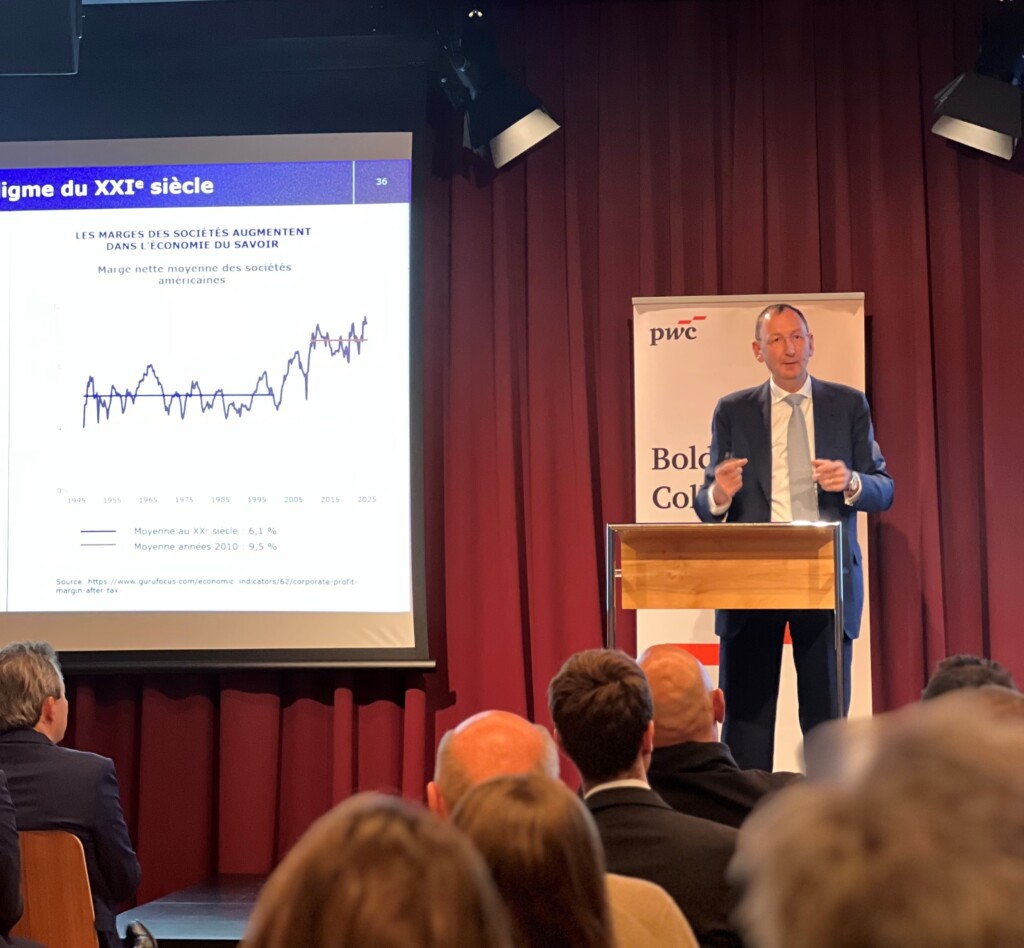Article published in the “Opinion” section of Le Temps, February 14, 2023

Senior Partner, Dominicé
The recent decline in inflation figures in Switzerland and major Western economies may come as a surprise. The economy continues to perform well, interest rates have risen only modestly relative to inflation, and central bank balance sheets remain significantly inflated, leaving substantial excess liquidity in the banking system. In the decades before 2010, such a context would have led to further acceleration in inflation.
That is not the case today. We believe that monetary mechanisms have fundamentally changed, with the result that, within two to five years, interest rates in Switzerland will return to negative territory—for three main reasons, which we will detail below.
Prices Under Pressure
The first reason is a major shift linked to new deflationary pressures stemming from increased price transparency, primarily due to information technology, which makes it easier and cheaper to access pricing information for any good or service. This fuels competition and puts downward pressure on prices. Deflationary pressures are also linked to reduced risk of shortages, a traditional driver of price increases. Here again, technology has enabled smoother exchanges through better information along supply chains, more flexible industrial tools capable of adjusting production quickly, and increased ability to geographically relocate production when needed. Additionally, in the modern economy, an increasing number of goods and services have a marginal cost of production close to zero. Supply can adjust to demand fluctuations without additional cost, and such markets are conducive to price declines since gaining market share is a top strategic priority.
Negative Real Interest Rates
The second reason is another fundamental shift: the emergence over the past ten to fifteen years of a new economic equilibrium characterized by negative real interest rates. Several factors explain this development. For instance, increased life expectancy raises the need for savings among working individuals—regardless of the expected return on those savings. The growing concentration of wealth also boosts the demand for savings: the rich and ultra-rich are, by nature, super-savers, and the more wealth is concentrated, the higher the savings propensity.
The second reason is another fundamental shift: the emergence over the past ten to fifteen years of a new economic equilibrium characterized by negative real interest rates.
Meanwhile, investment opportunities are diminishing. Slowing global population growth and the associated economic deceleration reduce the need for capital to build infrastructure and real estate assets. Moreover, in today’s intangible capital economy—a growing segment—capital formation is often a by-product of normal business operations rather than fixed capital investment financed by savings. This intangible capital may include client lists, highly skilled teams, specialized know-how, and brand reputation. The result is that while savings are increasingly abundant, attractive investment opportunities are becoming scarcer. All these elements contribute to the general decline in capital returns.
A Swiss Specificity
The third reason is specific to the Swiss franc. Overall, the combination of low inflation and low real interest rates naturally results in low nominal interest rates. In Switzerland, this situation is exacerbated by persistent current account surpluses, which have created a surplus of domestic savings. Added to this are generally sound public finances and respect for the central bank’s independence, reinforcing trust in the currency. During global inflation waves—often coinciding with financial crises—the demand to repatriate capital to Switzerland drives the franc higher, thereby moderating domestic inflation via the prices of imported goods.
This counter-cyclical behavior makes the Swiss franc a defensive asset, implying that real interest rates in francs should be lower than those in foreign currencies. Everything points to nominal Swiss interest rates remaining systematically below those in dollars or euros. The Federal Reserve and the European Central Bank have resorted to quantitative easing since 2008, forcing the Swiss National Bank (SNB) to do the same to prevent excessive appreciation of the franc.
Unlike its counterparts, the SNB has built a balance sheet highly sensitive to currency fluctuations, with liabilities primarily in francs and assets in foreign currencies. As a result, it has simultaneously fought three potential threats: the risk of deflation driven by franc appreciation, the risk of a real estate bubble fueled by negative interest rates, and finally, the significant risk of losses due to the expansion of its balance sheet.
As a result, the SNB has simultaneously fought three potential threats: the risk of deflation driven by franc appreciation, the risk of a real estate bubble fueled by negative interest rates, and finally, the significant risk of losses due to the expansion of its balance sheet.
This third risk was largely ignored until 2022, when the SNB recorded a loss of CHF 132 billion. This is why our forecast—that inflation will decline globally over the coming years—implies that interest rates will first return close to zero on the dollar and euro. Given that foreign exchange interventions would further expand its balance sheet and create excessive loss risks, the SNB will have no choice but to return to negative interest rates—the only reasonably usable tool to prevent an exaggerated rise in the Swiss franc.
Full article in Le Temps here: 2023.02.14 Vers un retour des taux négatifs en Suisse – Michel Dominicé – Le Temps Pg 12.pdf


